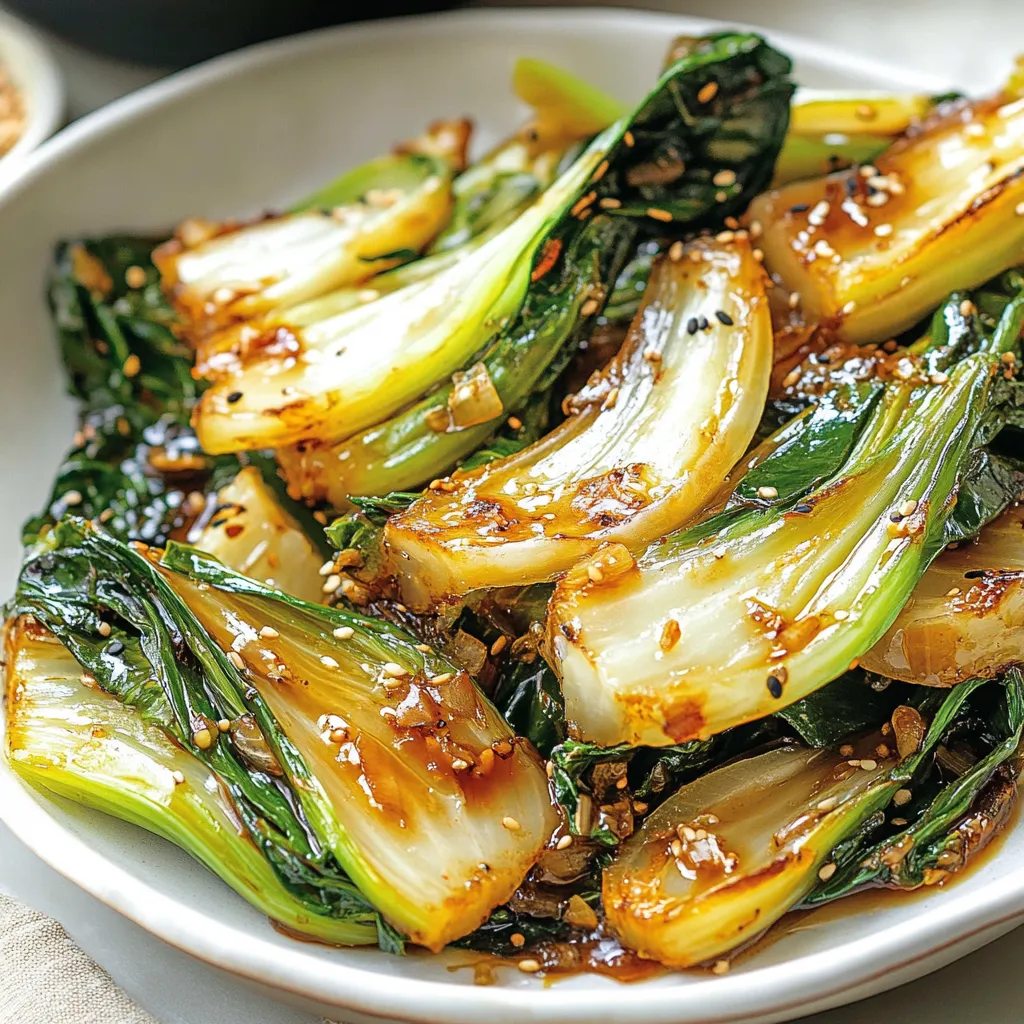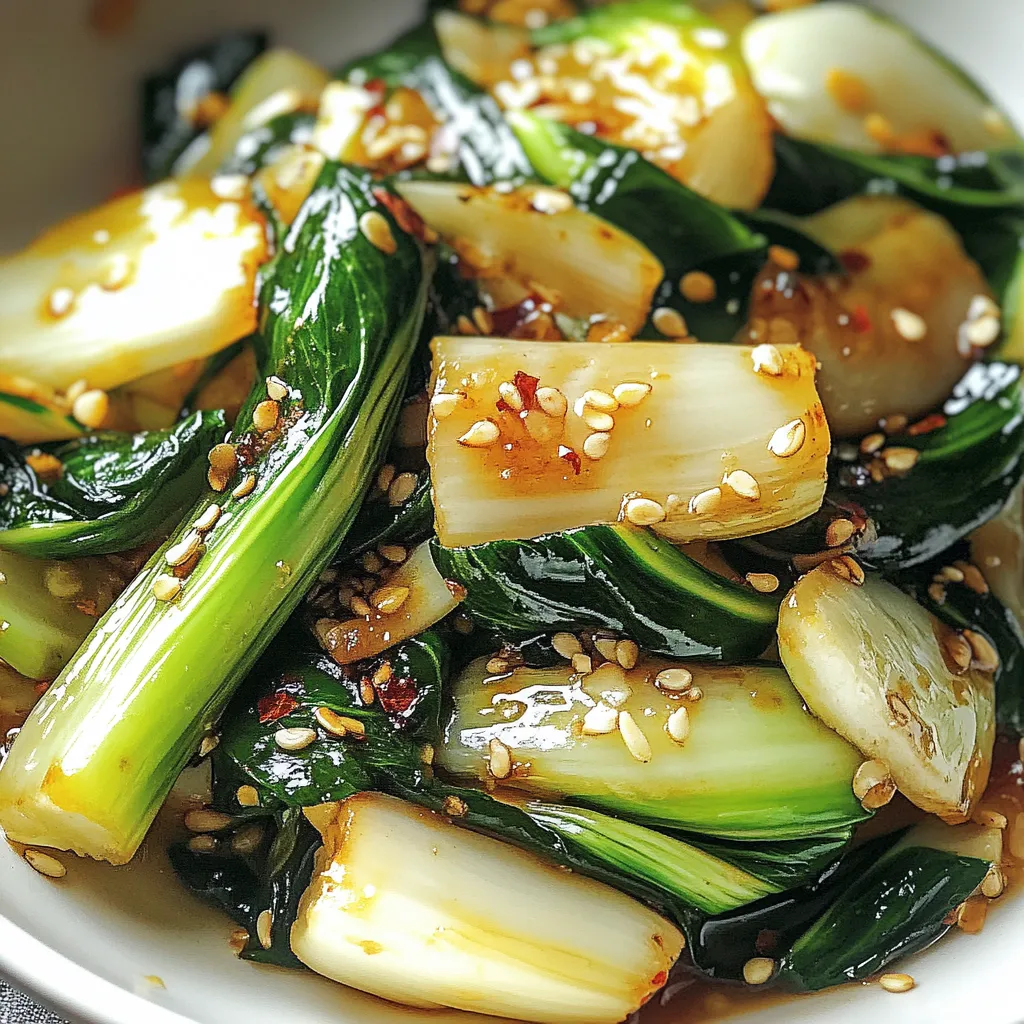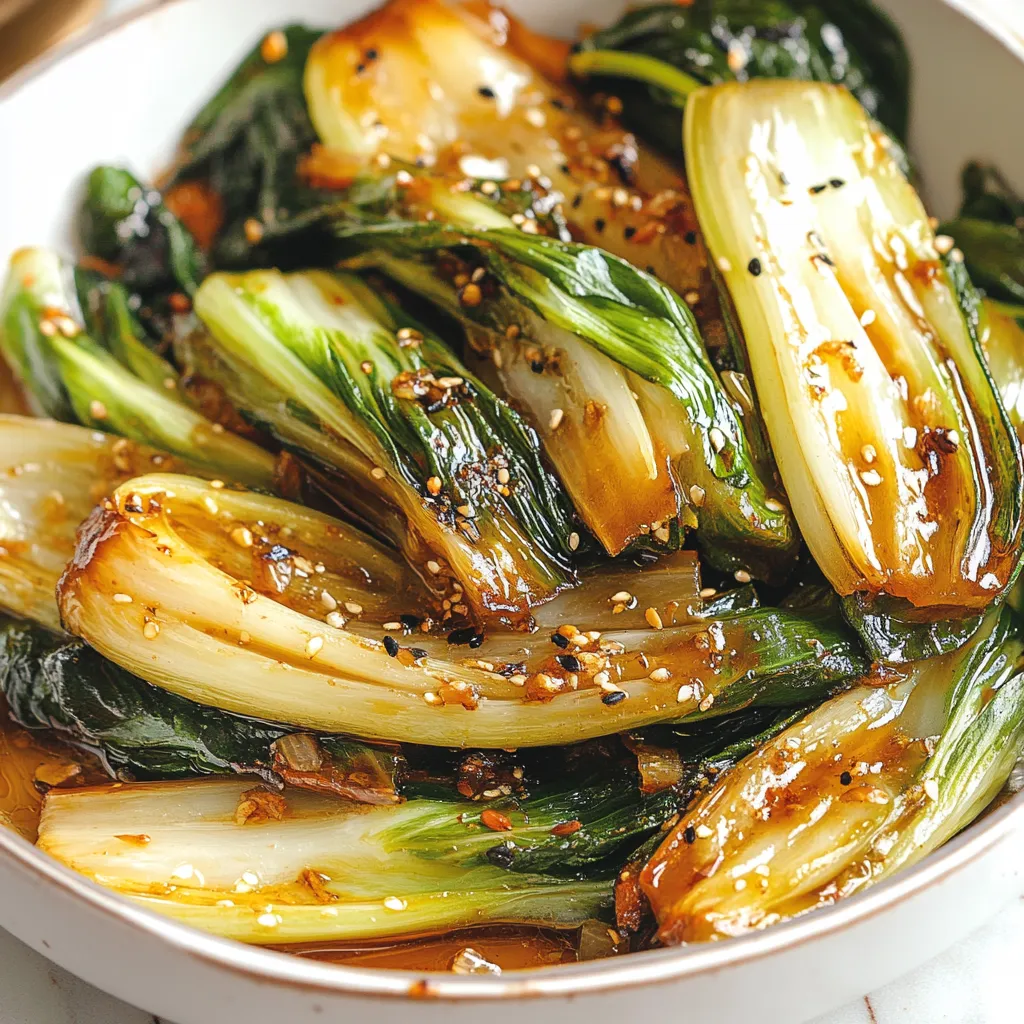 Pin it
Pin it
This five-minute bok choy dish turns plain veggies into an amazing side with minimal fuss. When garlic meets soy sauce and sesame oil, you get this incredible mix of flavors that works so well with the crunchy stalks and soft leafy parts of bok choy.
I whipped up this dish once when I needed a quick veggie side for some friends who dropped by. Everyone was so wowed by how tasty and easy it was that now I grab bok choy whenever I see it fresh at the store.
Ingredients
- Olive oil: Works as your cooking base and won't overpower the gentle bok choy taste
- Sesame oil: Brings that rich nutty flavor that makes this taste like takeout
- Fresh garlic: Adds wonderful aroma—pick solid bulbs with no green shoots
- Bok choy: Look for bunches with white crunchy stems and bright leafy tops
- Soy sauce: Gives that yummy savory kick—grab low sodium if you're watching salt
- Water: Creates the steam that softens the bok choy just right
Step-by-Step Instructions
- Heat the Oils:
- Pour the olive oil and sesame oil into a non-stick pan over medium heat. Wait for the oils to glisten—that's when you know they're hot enough. This mix gives great taste while keeping the sesame oil from getting burnt.
- Add Garlic:
- Toss in your minced garlic and stir it around for just a minute. Keep it moving so it won't burn. You want it smelling good but not turning brown, or it'll taste bitter.
- Cook Bok Choy:
- Put your cut bok choy into the pan with the garlic and let it cook for a minute until it starts to soften. Pour in the soy sauce and a splash of water to make steam that'll help cook the thicker parts.
- Steam to Perfection:
- Put the lid on right after adding your liquid and let everything steam for exactly 3 minutes. This gives you that perfect bite where stems stay a bit crunchy while leaves get nice and tender.
- Serve Immediately:
- Take the pan off the heat and put the bok choy on a plate right away. It'll keep cooking from its own heat, so serving quickly keeps the texture just right.
 Pin it
Pin it
I can't stress enough how important the sesame oil is in this dish. One time I ran out and made it without—it was okay but missing that special restaurant-style flavor. My family noticed right away and made me promise never to skip it again!
Perfect Pairings
This tasty bok choy goes great with all kinds of Asian dishes. Try it next to some teriyaki salmon, beef and broccoli, or just a bowl of rice with a fried egg on top. The slightly bitter, clean taste of bok choy balances out richer, savory foods really well.
Selecting the Best Bok Choy
When buying bok choy, go for bunches with solid white stems and bright green, crisp leaves. Stay away from any with yellow, wilting leaves or slimy patches. Baby bok choy works great too and cooks even faster. For the freshest stuff, check out Asian markets or farmers markets where they restock more often.
Flavorful Variations
This simple recipe is great as is, but you can always change it up. Add some red pepper flakes if you want heat, swap soy sauce for coconut aminos to make it gluten free, or throw on some toasted sesame seeds for extra crunch. Want to make it more filling? Toss in some sliced mushrooms or thin carrot strips when you add the garlic.
 Pin it
Pin it
Add this bright, easy veggie dish to your meals without any fuss. Trust me, it'll quickly become a regular at your dinner table!
Frequently Asked Questions
- → How do I prepare bok choy before cooking?
Start by cutting off about an inch from the bottom stem. Pull apart the leaves and wash them well under cold running water to get rid of any dirt stuck between them. Dry them with paper towels, then cut each bunch into four pieces lengthwise so they'll cook evenly.
- → Can I substitute baby bok choy in this dish?
You can totally use baby bok choy instead. Since it's smaller and softer, just cut it in half rather than quarters, and cook it for about a minute less so it doesn't get too soft.
- → What protein pairs well with sautéed bok choy?
This bok choy tastes great alongside grilled chicken, baked salmon, stir-fried shrimp, pan-fried tofu, or sliced beef. The garlic-soy flavor works with most Asian-style main dishes, making it easy to mix and match for different meals.
- → Can I make this dish spicy?
You sure can! Just toss in some red pepper flakes or add a splash of chili oil for heat. If you want something more interesting, try a spoonful of gochujang (that thick Korean chili stuff) or a squirt of sriracha mixed into the soy sauce.
- → Is there a low-sodium alternative to soy sauce for this dish?
You've got options! Try low-sodium soy sauce, tamari, or coconut aminos instead. Coconut aminos are a bit sweeter but still taste good with everything else in the dish, and they've got way less salt.
- → How can I tell when bok choy is perfectly cooked?
When bok choy is just right, the leaves will be bright green and soft but not mushy. The white parts should be tender but still have a nice crunch when you stick a fork in them. You should be able to cut it easily with a fork, but it shouldn't fall apart on its own.
